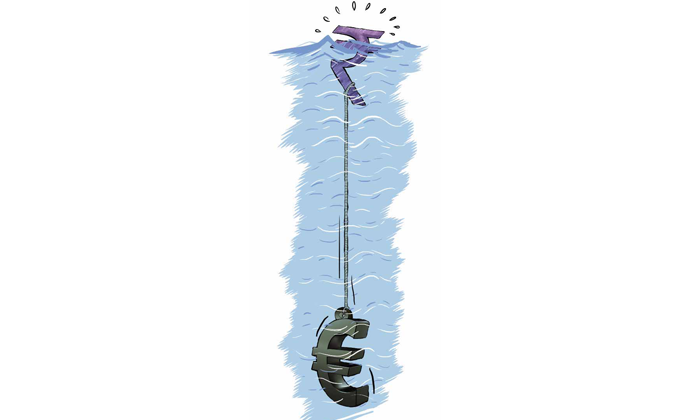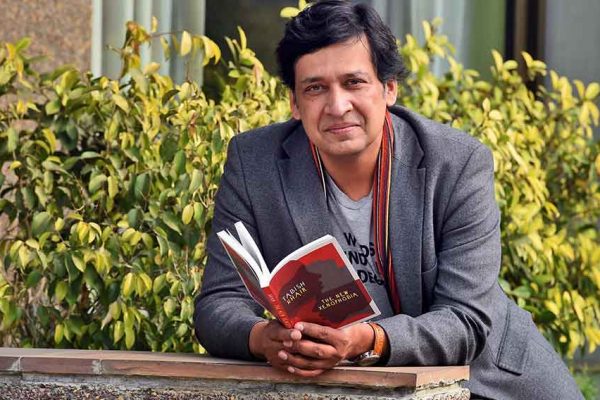The crisis in Europe is not merely an economic one; it has profound political and social dimensions as well. The impact of the double-dip recession in that continent is being felt across the globe and also in India. The European crisis has contributed to the sharp and sudden fall in the value of the Indian rupee vis-à-vis the American dollar, but the parallels do not stop there. On the political front, the weakening of centrist and conservative political parties in Europe mirrors the weakening of the Union government in India after eight years of rule by the Congress-led United Progressive Alliance coalition in New Delhi. At the same time, in both Europe and in India, there has been a resurgence of extreme-right and extreme-left political organisations.
“The EU currently has about 500 million inhabitants, or an eighth of the world’s population. The 27 countries put together account for roughly a fifth of the world’s gross domestic product when measured in terms of purchasing power parity.”
The sharpening of political and economic divides invariably finds expression in growing tensions in society, here as well as there. What is worse is that there appears to be no hope of an improvement in this position at any point in the foreseeable future. The multi-dimensional crisis in Europe is certain to continue through this calendar year, possibly longer, even as the Manmohan Singh government lurches from one crisis to another till the next general elections take place in 2014, or perhaps earlier.
In Europe, popular anger is on the rise on account of growing unemployment, stagnating or declining earnings and rising inequalities of income and wealth within countries and across them. The situation is no different in India. In fact, it is worse: The high levels of food inflation in the country over the last five years or thereabouts have sharply eroded the real incomes of the underprivileged and widened the gap between the rich and the poor. Added to this, the recent past has witnessed some of the most brazen acts of corruption and intolerance in India, provoking outrage on every level of society.
To step back a bit in time, the confederation called the European Union comprising 27 member states at present traces its origins to the European Steel and Coal Community and the European Economic Community formed by six countries in 1958. The 1993 Treaty of Maastricht led to the formation of the EU, which is supposed to operate through a system of supranational independent institutions and intergovernmental negotiated decisions by the member states. The grandiose aim of the EU was to not only develop a single market through a standardised system of laws applicable to all states that would enable “free movement” of people, goods, services and capital but also to ensure common policies on trade, agriculture, fisheries, regional development and so on.
The EU currently has about 500 million inhabitants, or an eighth of the world’s population. The 27 countries put together account for roughly a fifth of the world’s gross domestic product when measured in terms of purchasing power parity.
The creation of a single currency, the Euro, became the official objective of the EEC in 1969 but after the EU was formed in 1993, the monetary union (called the Eurozone) was not established till 1999 with eleven out of its then fifteen member states. The Euro remained an accounting currency till 2002 when notes and coins were first issued and national currencies were phased out in by-then twelve member states of the Eurozone – the zone comprised 17 members, with Estonia joining in 2011 as its latest member. At the time of writing this article (in the third week of May), the break-up of the Eurozone seemed imminent, with speculation raging about when Greece would re-introduce its original currency, the drachma. Political and economic observers were wondering with bated breath as to when the crisis would spread from Athens to Rome, Madrid, Lisbon, Dublin – and perhaps elsewhere as well.
The Euro was supposed to ease the travel of people and goods by eliminating exchange rate constraints, providing price transparency, stability and lower interest rates. Most importantly, the single market was meant to protect the citizens of all 27 member states of Europe against external economic shocks, uncertainty and volatility. None of these laudable objectives have been achieved. The sovereign debt crisis has deepened and widened. Why? How? Borrowing rates have been lower than inflation – three per cent against four per cent — encouraging profligate governments in Greece and elsewhere to borrow more and more, as if the party would never end. But it did, leave in its wake, a bitter trail of losses of jobs and homes, growing resentment against immigrants and a rise in attacks by racist and ultra-right groups.
Debt has to be repaid, and that is where the problems arose. Having abdicated their economic and monetary sovereignty, notably the right to print more currency notes, the weaker economies of Europe derogatorily called PIIGS (Portugal, Ireland, Italy, Greece and Spain) sunk deeper and deeper into a financial morass. This is now the new Europe whose governments are blaming the proverbial bad guys – credit rating agencies, speculators, economists and the media – for compounding their woes. There have been regime changes in at least nine countries in Europe in the recent past: in (alphabetical order) Greece, France, Finland, Ireland, Italy, Portugal, Slovakia, Slovenia and Spain. More are in the offing.
The prevailing chaos in Europe holds important lessons for a multicultural, multi-ethnic, heterogeneous country like India. It can be contended that attempts to impose economic and financial unity without political coherence and convergence will create more problems in the long run than are solved in the short term. Blind adherence to free market capitalism by denigrating the importance of the role of the government in creating a welfare state is another important limitation that is now out in the open like never before. For many decades, there was no dearth of people who believed that India could never survive – leave alone prosper – as a single, united nation-state and that it should become a confederation like the EU. But that was not to be and the doomsayers of disintegration have been proved wrong time and again.
For those in India who have been shouting themselves hoarse about the urgent need for economic “reforms” like opening up the country to foreign investors (including in sectors like multi-brand retail and insurance), there is a big lesson to learn from Europe’s recent experience. We in this country are still struggling to bring about the most important economic reform measure ever, a change that will unite our market and bring about a more efficient, more transparent and therefore, less corrupt Indian Union – namely, a common goods and services tax.














